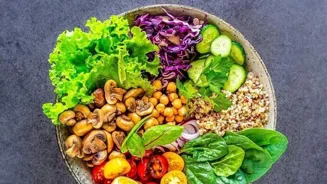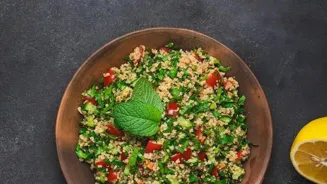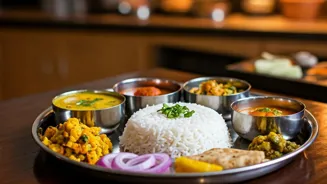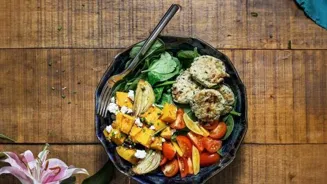Unlock the secrets to a vibrant, balanced plate, the Indian way! Dive into creating a healthier lifestyle through mindful eating
In the hustle-bustle of our daily lives, taking care of our health often
takes a backseat. We grab quick snacks, order takeaway, and sometimes completely forget about the essential nutrients our body needs. But fear not!
Creating a balanced plate is simpler than you think, and it's the cornerstone of a healthy and energetic life. This guide will walk you through the basics, so you can build meals that nourish your body and keep you feeling great.
So, let's dive in and discover how to create a vibrant, balanced plate, the Indian way!
Balanced plate: portion control with all food groups for nutrition variety
A balanced plate isn't about strict diets or complicated recipes; it's about portion control and ensuring you get all the essential food groups in the right amounts.
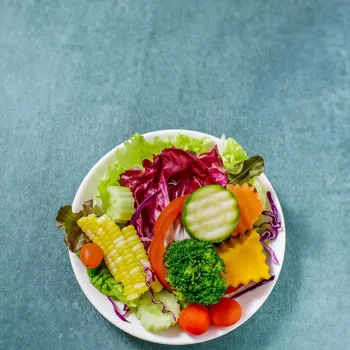
Imagine your plate divided into sections: one half filled with fruits and vegetables, one quarter with whole grains, and the remaining quarter with protein-rich foods. This visual representation helps you ensure you're getting a variety of nutrients in every meal.
Remember, variety is the spice of life, and the same goes for your plate! Each food group offers unique benefits, so including a colorful array of options is key. This simple approach will help you establish healthier eating patterns without feeling deprived.
Embrace local, seasonal produce for balanced, mindful eating
Now, let's break down each of these components: fruits and vegetables, whole grains, and protein, with some specific Indian examples. It is important that we keep in mind the need to embrace local and seasonal produce, which not only tastes better but is also more sustainable and affordable.
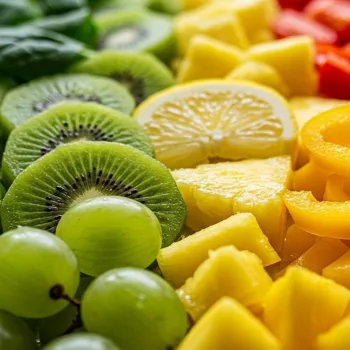
Think of it as celebrating the flavours of your region while nourishing your body. A balanced plate is not about restriction; it is about creating harmony between the different food groups to support optimal health.
It's a journey of mindful eating, where you become more aware of what you're putting into your body and how it makes you feel.
Eating fruits and veggies daily boosts health and immunity
Fruits and vegetables are packed with vitamins, minerals, and fiber, making them essential for overall health. They boost your immune system, aid digestion, and keep you feeling full. Aim to fill half your plate with these colorful gems.
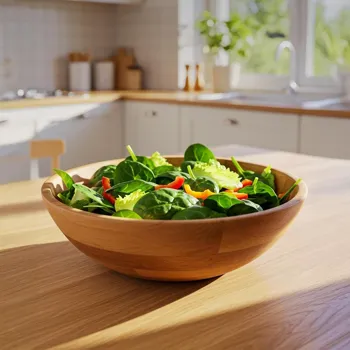
Think of a vibrant salad with cucumber, tomatoes, carrots, and bell peppers. You can also include a bowl of seasonal fruits like mangoes (in summer), oranges (in winter), or bananas any time of the year. Cooking vegetables in Indian style is also important.
Try adding spinach (palak) to your dal, making a vegetable curry (sabzi) with cauliflower (gobi) or potatoes (aloo), or enjoying a simple stir-fry with mixed vegetables.
Experiment with diverse fruits and veggies for optimal nutrition
Don't be afraid to experiment with different fruits and vegetables to find your favorites. Include a variety of colors to maximize the different nutrients you're getting.
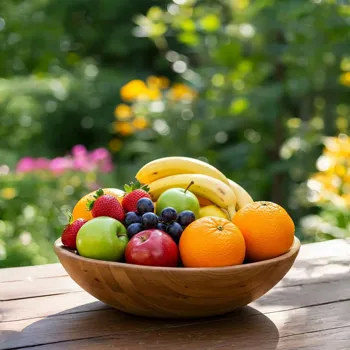
For example, leafy greens like spinach and kale are rich in iron and vitamin K, while orange vegetables like carrots and sweet potatoes are packed with vitamin A. Berries like blueberries and strawberries are excellent sources of antioxidants.
By incorporating a rainbow of fruits and vegetables into your diet, you will be nourishing your body with a wide range of essential nutrients. Remember, adding fruits and vegetables to your plate doesn't have to be complicated. Simplicity is key.
A simple side salad, steamed vegetables, or a handful of fresh fruit can make a big difference.
Fruits and veggies key to balanced plate, low cal and satisfying, experiment with variety
Think of fruits and vegetables as the foundation of your balanced plate. They provide the bulk of your meal with very few calories, helping you feel satisfied without overeating. So, load up on these nutritional powerhouses and enjoy the delicious benefits they offer.
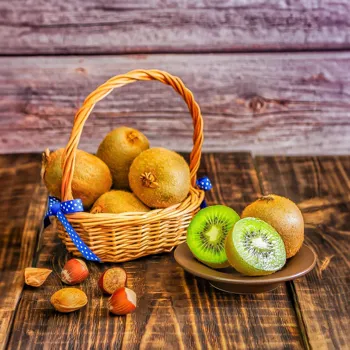
It is okay to experiment with spices and herbs. The best thing is to prepare a platter containing fruits and vegetables. Encourage children to eat food with these different colors. This is a good way to maintain a healthy lifestyle.
Start slowly, and gradually increase your intake of fruits and vegetables until you reach your goal of filling half your plate at each meal.
Whole grains provide energy, fiber, and nutrients for a healthy diet
Whole grains are a great source of energy, fiber, and essential nutrients. They help regulate blood sugar levels, promote healthy digestion, and keep you feeling energized throughout the day. Choose whole grains over processed grains like white rice and white bread.

Good options include brown rice, quinoa, whole wheat roti, and oats. In India, we have a variety of whole grain options to choose from. Brown rice is a healthy alternative to white rice, and you can use it in dishes like biryani or pulao.
Whole wheat roti is a staple in many households and can be paired with vegetables or dal. Oats can be enjoyed as a hearty breakfast with milk and fruits.
Choose whole grains as first ingredient, avoid refined grains, read labels, transition gradually
When choosing whole grains, look for products that list "whole grain" as the first ingredient. Avoid products that contain refined grains or added sugars. It is very important to read the nutrition labels. Start by gradually incorporating whole grains into your diet.
If you're used to eating white rice, try mixing it with brown rice to get used to the taste and texture. You can also switch to whole wheat bread or roti. Experiment with different whole grain recipes and find the ones you enjoy the most.
Try to avoid processed grains which can lead to health issues.
Embrace whole grains for balanced nutrition and energy
Remember, whole grains are an important component of a balanced plate, providing you with the energy and nutrients you need to thrive. By making simple swaps in your diet, you can easily incorporate more whole grains into your meals. Choose wisely and enjoy different forms of wholegrain.
So, embrace the goodness of whole grains and fuel your body with these nutritious staples. Also, try different varieties of roti. You can even add vegetables to it. A balanced plate is all about making smart choices and enjoying the journey towards a healthier you.
Protein-rich vegetarian foods for health and satiety
Protein is essential for building and repairing tissues, boosting your immune system, and keeping you feeling full. Aim to fill one quarter of your plate with protein-rich foods. Great vegetarian options include lentils (dal), chickpeas (chana), kidney beans (rajma), tofu, and paneer.
Dal is a staple in Indian cuisine and is a fantastic source of protein and fiber. You can enjoy different types of dal, such as moong dal, masoor dal, and chana dal. Chickpeas and kidney beans are also excellent sources of protein and can be used in curries, salads, or stews.
Tofu and paneer: versatile protein sources for varied dishes
Tofu is a versatile plant-based protein that can be used in a variety of dishes. It can be marinated, stir-fried, or added to curries. Paneer is a type of cheese that is commonly used in Indian cuisine. It can be grilled, added to curries, or used in desserts.
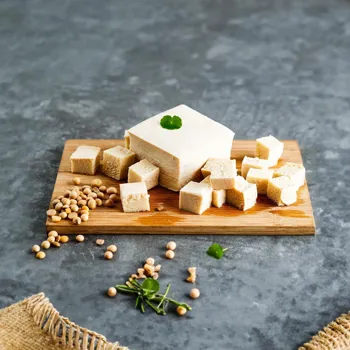
When choosing protein sources, opt for lean options and avoid processed foods. Include different types of protein to ensure you're getting a variety of amino acids. Don't be afraid to experiment with different protein sources and find the ones you enjoy the most.
Protein-rich foods for a strong, healthy body
Remember, protein is an essential component of a balanced plate, providing you with the building blocks you need for optimal health. By incorporating a variety of protein-rich foods into your diet, you can ensure you're getting all the essential nutrients you need.
So, power up your plate with these protein powerhouses and enjoy the benefits of a strong and healthy body. This is a great ingredient and works a lot. It is important to soak and cook the legumes well. Overcooking them is also not a good idea.

